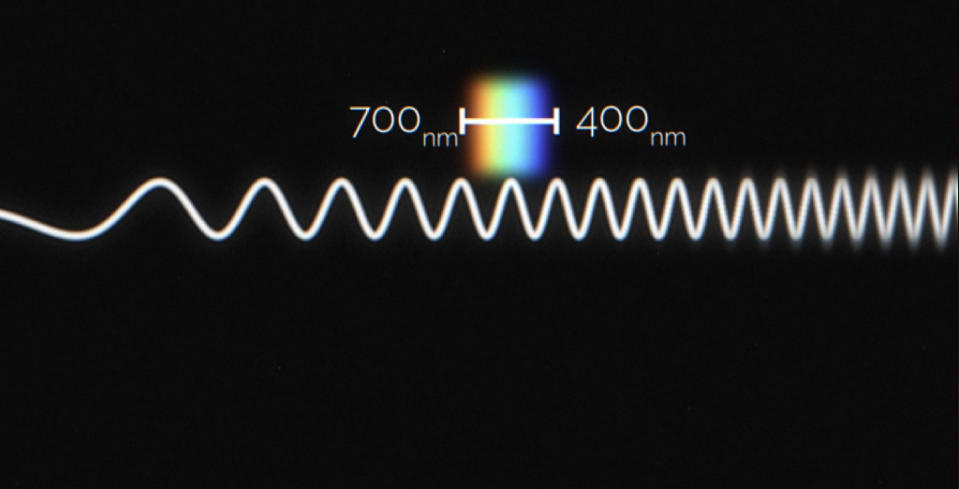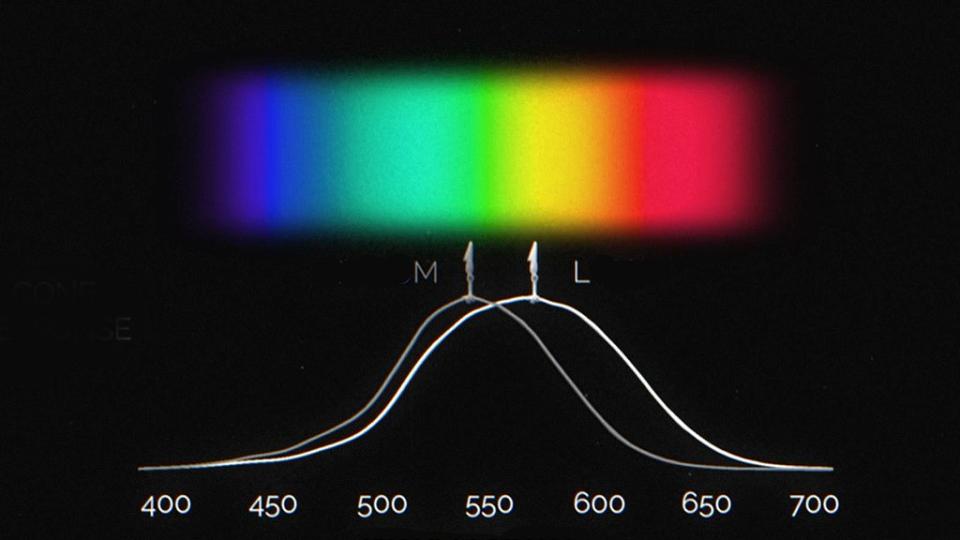Check out this channel.
Even though screens can’t reproduce all the colors visible to the human eye, and most spectral colors can only be approximated, it’s still pretty, isn’t it?
But do you notice something strange?
Every color imaginable appears… except one.
Where is Magenta?
It does not exist or does not exist in the spectrum of visible light in nature. So why do we watch?
Our brains are the same Fluffy and thin information processors.
They convert billions of events around us into signals we can understand.
And they interpret those signals as sounds, smells, tastes, sensations, etc.
One of the things that surround us is the electromagnetic field.

There are waves of energy that ripple through this field and their frequency determines many effects.
A few waves will reheat your soup in the microwave. Others show us your bones through x-raysOthers broadcast your favorite radio programs.
Humans can detect only a small fraction of these wavelengths with our bodies, most of which are through our eyes.
We call them visible light.
Why detect only a short wave is debatable.
But what we do know is that electromagnetic waves between 400 and 700 nanometers, or the visible light spectrum, are the only wavelengths that travel easily in water.
It is also part of the spectrum of electromagnetic waves What else does the sun emit?.

Since our early ancestors lived in the ocean and were illuminated by the sun, it makes sense that we evolved to detect the most common and useful wavelengths in the spectrum.
From waves to colors
Our eyes detect color through cones, specialized cells located in the center of the retina, the macula.
There are three types of cones in the human eye.
-
Type L: Sensitive to longer wavelengths
-
Type M: Sensitive to medium wavelengths
-
Type S: Sensitive to short wavelengths
S detects the blues; M, green colors; Ls, red.
But we see more than red, green and blue.
The cone cells in your eyes tune into the wavelengths they detect.
Look at this map.

When light with a wavelength of 570 nanometers enters your eye, it stimulates the L and M cones.
Their responses are combined and converted into an electrical message that is sent as a single signal to the brain via the optic nerve.
We interpret this signal as follows Yellow light.
A unique feature of this system is that when two light beams of the same wavelength add up – in this case 570 nanometers – and enter the eye at the same time, the signal sent to the brain is the same.
Those two light rays together make us see yellow.
The screen you’re looking at takes advantage of the way our brain perceives color.
If you look closely, you’ll see that screens are made up of small groups of red, green, and blue lights, but your screen can produce the entire spectrum.
Every color we perceive can be produced via this dual pathway: either a single wavelength of light or a combination of wavelengths that stimulate our cones in the same way.
Except for one.
Magenta

Officially no Magenta.
Magenta doesn’t have the same wavelength of light that the human brain does, but how?
We perceive it only when the S and L cones pick up a pure red and blue light signal.
Our brains actually create it.
Because?
We don’t know.
However, it is useful because most of our early primate ancestors lived in evergreen forests.
Magenta fruits and flowers would have made a great contrast against the green background, and the sight of them made it easier for our ancestors to find a tasty lunch.
Our brains make these weird cognitive leaps all the time.
You might be surprised how much the world around you is It just doesn’t seem right.
* This article is adapted from the BBC Reel video “Magenta: The Color That Discs”.. If you want to see, Click here.


:quality(85)/cloudfront-us-east-1.images.arcpublishing.com/infobae/SMPW7M5BQFERBOQUPJXKCOKARY.jpg)
:quality(85)/cloudfront-us-east-1.images.arcpublishing.com/infobae/NP5NEZXMZFGNLBHNEQJHPJVMKM.jpg)

:quality(85)/cloudfront-us-east-1.images.arcpublishing.com/infobae/X7DZAL3I4REJTKPZ4Y4DYBHFMI.jpg)